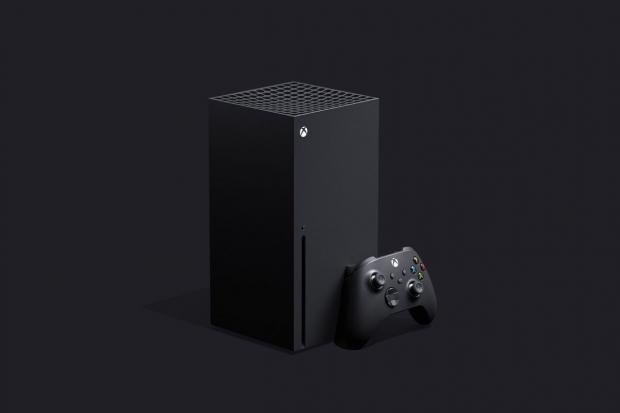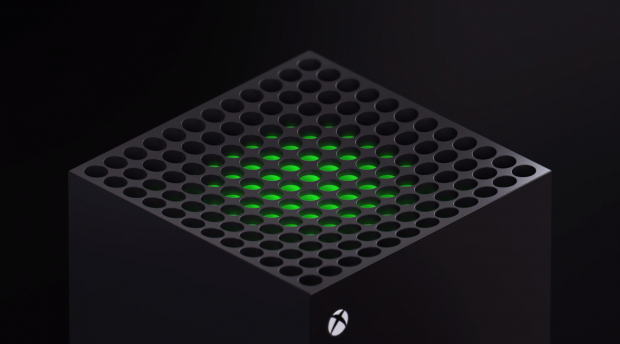As promised, Microsoft's next-gen console come with a new naming scheme the sets the stage for the future of Xbox.

The new Xbox Series X console (formerly Project Scarlett) isn't just the name of a new system, but the name of a new generation. We can expect more Xbox systems to use the "Series" label as Microsoft blurs the lines between generations. More systems like, say, the rumored lower-end Lockhart console that's rumored to release alongside the Xbox SX in Holiday 2020.
Rumor has it Microsoft will release two next-gen consoles in 2020: Anaconda, the codename for the revealed Xbox SX that hits 4K 60FPS, and Lockhart, a disc-less system with lower specs that targets 1440p 60FPS. Microsoft has yet to confirm Lockhart's existence, but the new Series moniker strongly hints that it's possible.
Releasing a cheaper next-gen system makes a lot of sense.
The Xbox Series X sounds like it'll be incredibly expensive thanks to its hardware specs that include 12TFLOP GPU, GDDR6 memory, high-end NVMe SSD, and new Zen 2 CPU. It's even shaped like a mini-ITX PC, strongly hinting it needs some serious ventilation. Based on this hardware it's possible the Xbox SX overshoots its rumored $499 price point.
Not everyone can afford (or wants) an enthusiast grade Xbox, the same way not everyone rushed out to buy an Xbox One X. The cheaper Xbox One S is the sweet spot right now, and Lockhart aims to be the sweet spot of next-gen.
With Lockhart, gamers can theoretically still get the benefits of next-gen like a super-fast SSD, ray tracing, the Navi GPU and Zen 2 CPU combo, and other features like supported adaptive sync. The trade-off is just that everything's been dialed down to a lower spec for 1440p 60FPS versus native 4K 60FPS.
Lockhart will simply be weaker with less RAM and GPU horsepower, thus making it cheaper, and it probably won't come with a disc drive.

Gamers are worried that Lockhart will simply complicate development and create instances where developers hold back their next-gen games to cater to Lockhart's lower-end hardware. The truth is this is already going to happen regardless if Lockhart releases or not. Every major first-party Xbox game will release on Xbox One, Xbox One S, Xbox One X, Windows 10 PCs, and the new next-gen systems, meaning scaling is something they're used to and already have to do.
It's also worth mentioning that first-party Xbox Studios devs will have the best-optimized games for next-gen simply because they're closer to Microsoft and the source of the hardware. And they've also been instrumental to shaping the hardware from the get-go, similar to how Turn10 helped shape the Xbox One X back in 2016.
If anything it'll be third-party devs that run into potential issues, which will likely be mitigated by Microsoft's strong and easy-to-use SDK platform.
The only thing I'm worried about is Lockhart's name. Will it be the Xbox Series S? If so...the abbreviation would be Xbox SS, and I don't think that's an image Microsoft wants to embrace.
Microsoft plans to release the Xbox Series X in Holiday 2020. No info has been confirmed or announced on Lockhart, but we could hear more news at E3 2020.
Check below for confirmed specs and details, and a huge content listing of everything we've heard about Xbox Series X and Lockhart so far:
Xbox Series X confirmed details (Formerly Project Scarlett):
- 8-core, 16-thread Zen 2 CPU
- Navi GPU on RDNA architecture
- Highly customized 7nm SoC from AMD
- GDDR6 memory
- 2x Xbox One X's 6TFLOPs of GPU perf
- 4x CPU power of Xbox One generation
- Can deliver up to 40x more performance than Xbox One in specific use cases
- Adaptive sync supported
- Super-fast SSD that can be used as VRAM
- Supports 8K resolution (likely media playback)
- 120FPS gaming
- Variable refresh rate (adaptive sync/FreeSync)
- Variable Rate Shading
- Raytracing confirmed with dedicated raytracing cores
- Backward compatible with thousands of Xbox, Xbox 360, and Xbox One games
- New controller with a dedicated share button
- Compatible with Xbox One accessories
Lockhart (Unconfirmed lower-end Xbox Series hardware)
- 1440p 60FPS
- No disc drive
- Super-fast SSD that can be used as VRAM
- 7nm AMD SoC w/ scaled-down 8-core, 16 thread Zen 2 CPU at 3.5GHZ and Navi GPU
- Lower GDDR6 memory pool (Possibly 12GB)
- ~6-8 TFLOPs of power?
- Aims to rival PS4 Pro/Replace Xbox One S
- Full backward compatibility with all Xbox One games
- Cheaper MSRP
Anaconda/Xbox Series X/Project Scarlett
- 4K 60FPS
- Disc drive with 4K UHD playback
- Super-fast SSD that can be used as VRAM
- 7nm AMD SoC with 8-core, 16 thread Zen 2 CPU at 3.5GHz and Navi GPU
- 16GB GDDR6 RAM
- 12 TFLOPs of power
- 2x GPU power as Xbox One X/aims to replace Xbox One X
- Full backward compatibility with all Xbox One games
- More expensive MSRP
Xbox Series X coverage:
- Microsoft reveals next-gen Xbox console, the Xbox Series X
- Xbox Series X may allow suspend and resume for multiple games at once
- Next-gen Xbox Lockhart has 'significantly less RAM' for 1440p gaming
- Next-gen Xbox Scarlett specs: 12TFLOPs, 16GB RAM, 3.5GHz Zen 2 CPU
- Cheaper next-gen Xbox Lockhart targets 1440p 60FPS
- Cheaper next-gen Xbox Lockhart targets 1440p 60FPS
- Project Scarlett devkits aren't widely available yet
- PS5, Xbox Scarlett SSD may use Optane-like ReRAM to supercharge speeds
- NVIDIA G-Sync monitors to improve PlayStation 5 and Xbox Scarlett
- Project Scarlett won't get VR gaming, Microsoft doesn't care about VR
- Next-gen Xbox Scarlett plays four generations of Xbox games
- Microsoft teases next-gen Xbox: 8K, 120FPS, super-fast SSD
- Xbox Scarlett CPU: 'no compromises', allows for 4K 120FPS gaming
- Microsoft: Xbox Scarlett will kick PlayStation 5's ass in perf/price
- Next-gen Xbox may hit 4K 60FPS in every game
- Project Scarlett to hit 1080p 120FPS gaming
- Project Scarlett trade-in program announced, but there's a big catch
- New Viking Assassin's Creed may be next-gen console launch game
- Next-gen Xbox may get room-scale VR gaming
- PS5 and Xbox Scarlett will both handle ray tracing differently
- Gears 5 developer says Xbox Scarlett has dedicated ray tracing cores
- GTA 6 on PS5, Project Scarlett to have insane hyper-realistic visuals
- AMD 'Flute': Xbox Scarlett SoC: Zen 2 8C/16T @ 3.2GHz on 7nm
- Project Scarlett's price isn't locked in yet
- Project Scarlett isn't the last Xbox console

